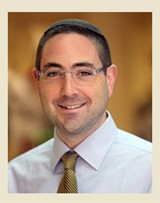
By Rabbi Ari Enkin
This week’s Torah message is clear: Our personal relationship with God is totally up to us. The opportunity is there and everyone is welcome and encouraged to take advantage.
This week’s Torah reading is “Teruma” (Exodus 25:1-27:19), meaning “donation” and referring to the donations that the Jewish people were asked to contribute towards construction of the “Mishkan,” translated as “Tabernacle.”
The Mishkan was the portable synagogue that accompanied the Jewish people throughout their 40 years of wandering in the desert. Indeed, now that the Jews had been freed from Egypt, had crossed through the Red Sea and were on their way to the Promised Land, our Torah studies in the coming weeks will focus on the desert experience, with this week focusing on the Mishkan in particular.
The Mishkan, like any synagogue, had many components. In addition to the sanctuary where the Kohen (priest) would perform the services, the utensils, implements, vessels, and furnishings played a prominent role as well. No doubt readers are familiar with the menorah – the seven-branched candelabra that was a distinct feature of the Mishkan, and later, the Beit HaMikdash, the Holy Temple in Jerusalem. Until today, the menorah remains the most popular Jewish symbol as well as the emblem of the State of Israel. There was also the Aron HaKodesh (Holy Ark), the Shulchan (Table) the trumpets, and more.
The Holy Ark, as its name implies, was the Tabernacle’s holiest and most sanctified utensil. The tablets of the Ten Commandments – as well as a copy of the Torah and a portion of the manna, the food that God had provided for the Jewish people in the desert – were stored inside the Ark.
Rabbi Israel Kagan (popularly known as the Chafetz Chaim, meaning “he who desires life,” named after his famous book on Jewish ethics), notes that throughout the construction of the Tabernacle and its utensils, God tells Moses, “And you will build…” – with “you” written in the singular form. Regarding construction of the Holy Ark, however, God says, “And you will build…” with “you” in the plural. Why is it that God instructed the construction of all other utensils in the singular, but when it came to the Ark, the verse is written in the plural?
The Chafetz Chaim explains: The Ark housed the Ten Commandments, which were written by God. As such, the Ark represents the closest that we can get to God. It represents our relationship with God, and it represents the bridge between this world and the Eternal. As such, God wanted to make it clear that the Holy Ark – and by extension, the Torah – belongs to each and every single person. It is not merely the possession of the priests, the elders, or the rabbis. Therefore, it was important that each one have a share in its construction, so that no one could say that the Holy Ark, or the Torah, belongs to him exclusively.
In a similar fashion, God commands: “They should build a Tabernacle for Me, and I will dwell among them.” Here again, we see – within the same verse – a word in the singular (Me) and a word in the plural (them).
The message is clear: Our personal relationship with God is totally up to us. The opportunity is there and everyone is welcome and encouraged to take advantage. We can construct a Tabernacle that resides within each one of us. It is ours for the taking!
Author: Rabbi Ari Enkin,
UWI Rabbinic Director
Date: Jan. 30, 2014
Click below to read more Living Torah articles on this week’s Torah portion: